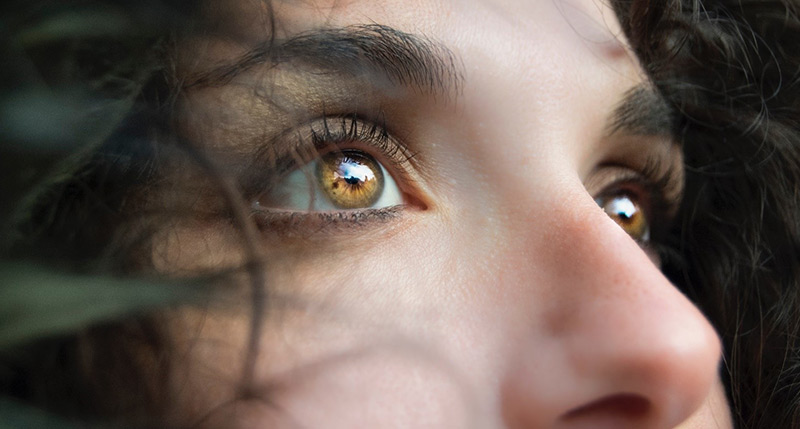Diabetes is a chronic, progressive disease that can cause extreme changes to your eye health, and is a leading cause of blindness for those under the age of 74.
Because the condition causes changes in the blood vessels that feed the eyes, it can cause eye problems known together as Diabetic Eye Disease. These conditions include diabetic retinopathy and diabetic macular edema. Having diabetes also doubles a person’s risk of developing cataracts and glaucoma.
What is Diabetic Retinopathy?
The retina is the light-sensitive layer of tissue that lines the back of your eyes. The retina is responsible for converting the images you view into electronic signals that the optic nerve carries to the brain. In short, the retina is essential to your ability to see clearly.
In people with diabetes, high blood sugar can cause damage to the blood vessels that supply blood to the retina , a condition called diabetic retinopathy.
In the beginning stages of diabetic retinopathy, the walls of these tiny blood vessels can grow weak and swell or leak blood onto the retina. Your optometrist can tell if this has happened during a thorough examination of your retina when your eye is dilated for a comprehensive eye exam.
As diabetic retinopathy progresses, the damaged blood vessels can shut down. This sometimes triggers new, abnormal blood vessels to form across the surface of the retina. Left untreated, this can cause severe vision problems and even blindness.
What is Diabetic Macular Edema?
The central part of the retina that powers your sharp, central field of vision is called the macula. The macula enables you to read, see faces, drive, and perform close-up tasks.
Similar to how diabetes damages the blood vessels in other areas of the eye and other organs of the body, it can cause damage and enlargement of the blood vessels in the macula. This condition is called diabetic macular edema.
When the macula suffers damage, it destroys the central, sharp vision and leads to vision loss or total blindness.
Macular edema most often presents in patients who are already experiencing the symptoms of diabetic retinopathy.
How Can I Manage Diabetic Eye Disease?
While there isn’t a cure for diabetes, managing the disease is 90% under the control of the patient. Unfortunately, once diabetic eye damage occurs, it can’t be reversed. However, you can prevent it from getting worse by managing your blood sugar levels.
By managing your diabetes and keeping blood sugar levels steady, you can prevent further progression of diabetic eye disease. It’s also critical to monitor your cholesterol and blood pressure levels. If you smoke, quitting will also help you to maximize your eye health and reduce the risk of vision loss.
If you have diabetes, the American Optometric Association recommends that you have a comprehensive eye exam that includes dilation at least once per year. Your optometrist may recommend that you have a comprehensive eye exam more often due to the changes in your eyes or the severity of your diabetic eye disease.
Who is at Risk for Diabetic Eye Disease?
- The longer you’ve had diabetes, the higher your risk of developing diabetic eye disease.
- About 33% of diabetics over 40 years old already show signs of diabetic retinopathy, which is the top cause of vision loss for people with diabetes. If found and treated early, you can reduce your risk of going blind by up to 95%.
- High blood glucose levels and high blood pressure—when left untreated—increase your risk of developing diabetic eye disease.
- Some specific groups of people are more likely to lose vision or go blind from diabetic eye disease, including African Americans, Native Americans, Alaskan Natives, Hispanic and Latinos, and Pacific Islanders.
- Women with diabetes who become pregnant can develop eye problems quickly during pregnancy and must remain vigilant to catch problems early to protect their vision.
What are Symptoms of Diabetic Eye Disease?
Early symptoms may not be noticeable. Diabetic eye disease isn’t painful. You may not detect the early signs, but your optometrist can.
As the disease progresses, symptoms may include:
- Wavy or blurred vision
- Frequent changes to vision, often from day to day
- Poor color vision
- Dark areas in vision or vision loss
- Floaters—dark spots or strings
- Flashes of light
Call your optometrist immediately if there are sudden changes to your vision, such as flashes of light or noticeably more floaters than usual, or if it seems as though a curtain has been pulled over your eyes. All of these symptoms could indicate a detached retina, which is a medical emergency.
What are Treatments for Diabetic Eye Disease?
It’s critical to carefully monitor your blood glucose levels, blood pressure and cholesterol, to keep these crucial indicators within the optimal range. In addition, your optometrist may prescribe medications to block abnormal growth of blood vessels in the eye or to stop fluid leaks in the eye.
For patients with leaky blood vessels, laser treatment is often prescribed to help prevent diabetic eye disease from progressing. This can prevent additional vision loss or blindness but won’t bring back any vision loss you’ve already experienced.
Preventing Diabetic Eye Disease is Key
The most important factor in diabetic eye disease is prevention of vision loss. Work closely with your doctor to adopt best practices in managing your diabetes. Schedule an annual comprehensive eye exam with your optometrist, and follow his or her recommendations to protect your eyes and prevent blindness.


Recent Comments